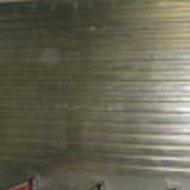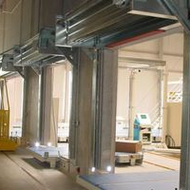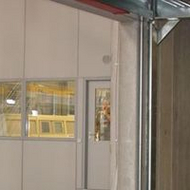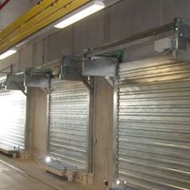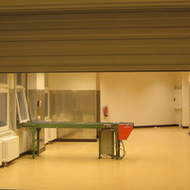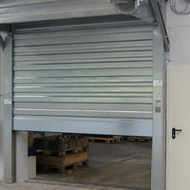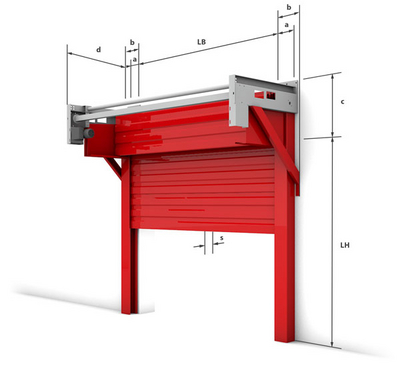
Product description
Space-saving and extra sturdy sheet metal closure for discontinuous and separate conveyor systems: Omnicompact features a segmented damper blade. This stacks up into the lintel area during closing. The system is suitable for very large openings, but is also available as a low-camber version that just requires a height of 560 mm. Omnicompact complies with the requirements of fire resistance classes EI 30 to EI 120 (tested according to DIN EN 1634-1) and is approved as a T30 and T90-gate.

|
Type |
Vertical fire protection stacking door |
|
Closing direction |
From top to bottom |
|
Fire resistance |
T 90 • EI1 120 • tested according to DIN EN 1634-1 |
|
Re-opening |
electromotive (standard) |
|
Conveyor system |
Interrupted conveyor system • Continuous conveyor system • Continuous roller conveyor system • Continuous suspension chain conveyor • Continuous travelling carriages |
Downloads
|
Required wall quality |
|
|---|---|
|
masonry |
d ≥ 240 mm |
|
concrete |
d ≥ 140 mm |
|
aerated concrete |
d ≥ 200 mm |
|
reinforced aerated concrete |
d ≥ 200 mm |
|
Technical feasibility |
|
|---|---|
|
LH |
(T30) 2000 mm - 6000 mm |
|
|
(T90) 2000 mm - 4500 mm |
|
|
(EI90) 2000 mm - 6400 mm |
|
|
(EI120) 2000 mm - 4300 mm |
|
LW |
(T30) 1000 mm - 9000 mm |
|
|
(T90) 1000 mm - 4500 mm |
|
|
(EI90) 1000 mm - 6700 mm |
|
|
(EI120) 1000 mm - 4500 mm |

